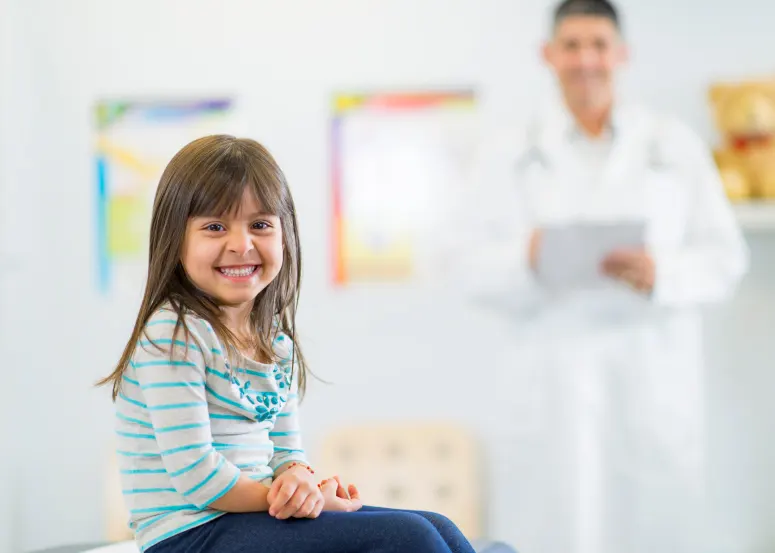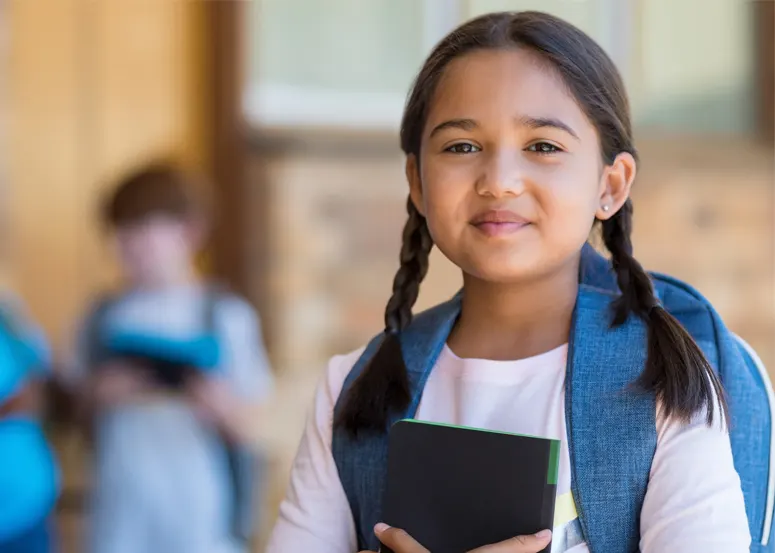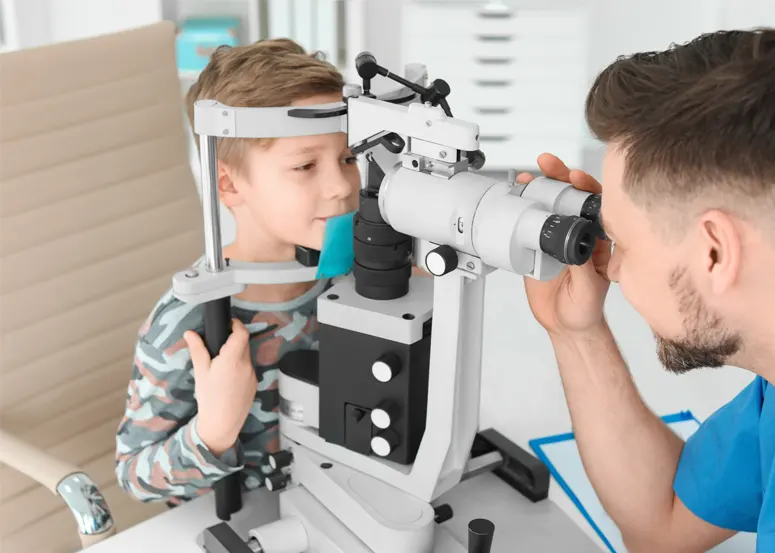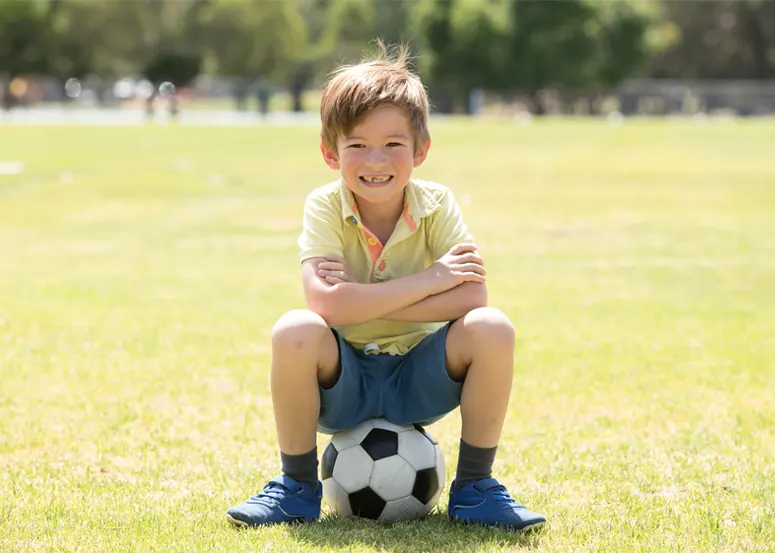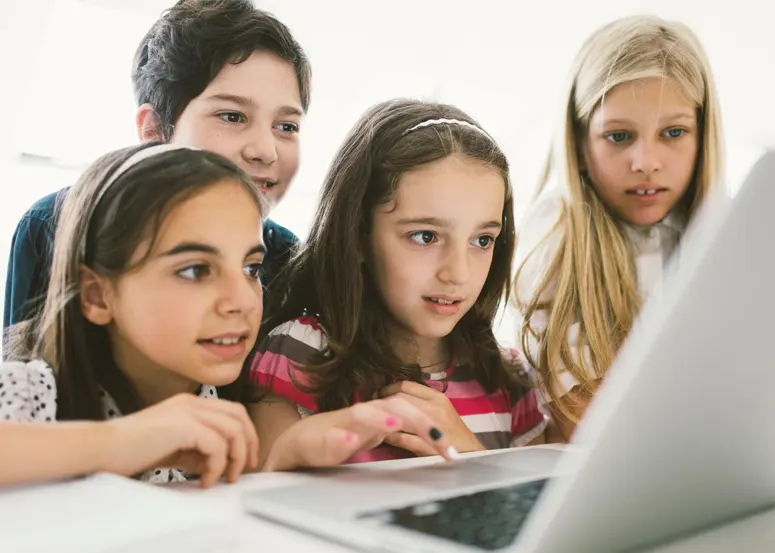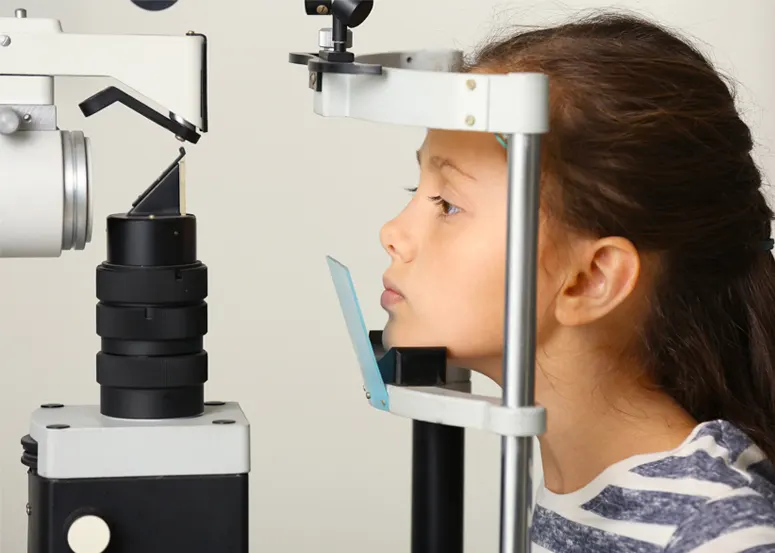Routines can be a way of teaching younger children healthy habits, like brushing their teeth, getting some exercise, or washing their hands after using the toilet1. Building in a routine when it comes to checking your children’s eyesight should also be considered.
What to look out for when it is time for a checkup
- If your child is complaining of blurred vision, headaches or sore, itchy, irritated eyes. These are symptoms that are associated with eye strain and visual fatigue.
- If your child is peering at near or distance tasks and possibly needing to get closer to see the tasks well. This sign may indicate that the quality of vision is not up to the needs of the child and may indicate that a correction is required to help.
- If you notice your child has a reduced attention/concentration span for tasks, or if their progress at school seems to have slowed, then that may suggest that they are struggling with the effort of focusing their vision, coordinating their eyes and/or processing the information.
- If there is a family history of vision problems (e.g. myopia). Early intervention has been shown to provide improved outcomes.
What does myopia or short-sightedness mean?
Myopia also commonly referred to as ‘near-sightedness’ or ‘short-sightedness’, is a common eye condition which causes blurred distance vision. Myopia occurs when the eyeball elongates at an abnormal rate. This means the optics of the eye focuses the image in front of where the retina now lies. The blurred vision that ensues is the symptom of myopia that we call “short-sightedness2”.
Over the last few decades Optometrists have seen a marked increase in the number of children developing myopia worldwide. The number of people progressing to severe degrees of myopia is escalating as well. The World Health Organisation (WHO) is estimating that by 2050, over half the world’s population will be myopic and ten percent will have developed “high myopia” (when the spectacle correction is -5.00D or greater)3.
Myopia is an epidemic that needs to be managed to reduce the eye health risks that go along with increasing degrees of myopia. If progressive myopic change can be mitigated/slowed, then the risks of sight-threatening complications are reduced.
Why managing myopia is important
While myopia can’t be prevented there are now several ways that myopia can be managed.
It is therefore important to catch changes in your child’s vision as early as possible. The earlier there is a diagnosis, the sooner it can be managed and therefore, the better the long-term visual outcomes will be for the child affected.
When parents bring their children in for eye examinations varies. Some (especially those with significant refractive error themselves) are proactive. However, Optometrists report seeing a lot of children once visual error is affecting their quality of life. This means that presentation can be delayed, depending on the child and the awareness of the parent. 40% of New Zealand children have not been to an Optometrist to have an eye examination before their ninth birthday and around 28% of New Zealand children (17 years and under) have never been to have an eye examination4.
How parents can help to manage myopia
Myopia is increasingly prevalent due to the lives that we all live now. The time spent indoors5 6 and performing near tasks seems to be significantly greater in today’s information-based world and can have a significant impact on myopic development7. There are some things that can be done simply, to reduce the risks of myopia development and progression.
- Spend more time outdoors. Evidence shows that children who spent at least 90 minutes outside in the natural light, are at a lower risk of developing myopia8 9 .
More research is needed to determine if it is to do with the intensity or brightness of the light OR the distances that children focus on, but what is proven is that there is a link between outdoor time and its benefit to a child’s myopia development. - Reduce “screen time”. Spending less time on screens and having frequent breaks has been shown to also help slow change and reduce the risk of myopic progression10. Less than 1% of Australian parents of children aged under 12 years say reducing screen time is the best course of action for primary-school-aged children diagnosed with myopia, and less than 1% acknowledged the role of increasing the amount of time spent outdoors.11
There are management strategies that optometrists can provide to slow/mitigate progression as well. Spectacles alone are not necessarily the best management option for all children. It is well worth discussing these options with your optometrist if you are concerned of myopia and its potential progression.
When planning your family’s regular health check-ups, don’t forget to include your child’s eyes and make an appointment to see your Optometrist.
About the Australia and New Zealand Child Myopia Working Group
The Australia and New Zealand Child Myopia Working Group is a collaboration of leading optometrists and ophthalmologists. The Working Group’s aim is to set a recommended standard of care for child myopia management, in order to slow progression of myopia in children.
To download a free copy of The Australia and New Zealand Child Myopia Report – A Focus on Future Management, launched in 2019 by the Australian and New Zealand Child Myopia Working Group click here.
Members are (in alphabetical order):
- Dr Rasha Altaie, Ophthalmologist, Auckland
- Luke Arundel, Chief Clinical Officer, Optometry Australia, Melbourne
- Jagrut Lallu, Optometrist and Immediate Past President of the Cornea and Contact Lens Society of New Zealand (CCLSNZ), Hamilton
- Margaret Lam, Optometrist and National President of the Cornea and Contact Lens Society of Australia (CCLSA), Sydney
- Dr Loren Rose, Paediatric Ophthalmologist, Sydney
- Andrew Sangster, Optometrist and Board Member of New Zealand Association of Optometrists, Wellington
- Chair – Scientia Professor Fiona Stapleton, School of Optometry and Vision Science UNSW, Sydney
1 https://raisingchildren.net.au/grown-ups/family-life/routines-rituals-relationships/family-routines
2 Flitcroft DI; He M; Jonas JB; Jong M; Naidoo K; Ohno-Matsui K; Rahi J; Resnikoff S; Vitale S; Yannuzzi L IMI – Defining and Classifying Myopia: A Proposed Set of Standards for Clinical and Epidemiologic Studies Investigative Ophthalmology & Visual Science February 2019, Vol.60, M20-M30.
3 The Impact of Myopia and High Myopia: Report of the Joint World Health Organization – Brien Holden Vision Institute Global Scientific Meeting on Myopia. University of New South Wales, Sydney, Australia. 16-18 March 2015
4 CooperVision Australia and New Zealand: Child Myopia in Australia – consumer perceptions survey. Conducted by YouGovGalaxy August/September 2018, conducted by YouGovGalaxy between Wednesday 29 August and Monday 3 September 2018. The sample comprised 1003 parents of children at home aged 0-18 years
5 Read SA, Collins MJ, Vincent SJ. Light Exposure and Eye Growth in Childhood. Investigative Ophthalmology and Visual Science 2015: 56(11):6779-6787
6 He M, Xiang F, Zeng Y et al. Effect of Time Spent Outdoors at School on the Development of Myopia Among Children in China: A Randomized Clinical Trial. JAMA 2015; 314:1142-1148
7 Read SA, Collins MJ, Vincent SJ. Light Exposure and Eye Growth in Childhood. Investigative Ophthalmology and Visual Science 2015: 56(11):6779-6787
8 Read SA, Collins MJ, Vincent SJ. Light Exposure and Eye Growth in Childhood. Investigative Ophthalmology and Visual Science 2015: 56(11):6779-6787
9 He M, Xiang F, Zeng Y et al. Effect of Time Spent Outdoors at School on the Development of Myopia Among Children in China: A Randomized Clinical Trial. JAMA 2015; 314:1142-1148
10 Ip JM, Saw SM, Rose KA, Morgan IG, Kifley A, Wang JJ, Mitchell P. Role of Near Work in Myopia: Findings in a Sample of Australian School Children. Investigative Ophthalmology and Visual Science 2008:49(7):2903-2910
11 CooperVision Australia and New Zealand: Child Myopia in Australia – consumer perceptions survey. Conducted by YouGovGalaxy August/September 2018, conducted by YouGovGalaxy between Wednesday 29 August and Monday 3 September 2018. The sample comprised 1003 parents of children at home aged 0-18 years
